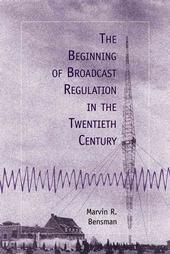
The Radio Act of August 13, 1912, provided for the licensing of radio operators and transmitting stations for nearly 15 years until Congress passed the Radio Act of 1927. From 1921 to 1927, there were continual revisions and developments and these still serve as the basis for current broadcast regulation. It required that all radio transmitters be licensed by federal government and that operators have a license. The Secretary of labor and commerce was given authority to assign broadcast wave-length bands and time periods when broadcasts could be carried. The secretary had no discretion on whether to issue a license or not.
It's available here in it's entirety: http://earlyradiohistory.us/1912act.htm
It set some standards that conceptually are assumed now, but at the time were debated. For example: "...the sending apparatus, to be referred to hereinafter as the "transmitter" This single like under the USE OF A PURE WAVE clause is the foundation of licensing transmitters individually and not for example coverage in sum over a licensed area.
The signal of distress was decreed to be three dots followed by three dashes followed by three more dots, what you think of as S.O.S.
their largest convern at the time was interference and appropriately the bulk of the document was comitted to limiting maximum output in certain situations: at sea, near shore, etc.
Wave conventions were writtin in to law as previously determined by the Berlin Convention as well. available here: http://earlyradiohistory.us/1906conv.htm#RegII




No comments:
Post a Comment